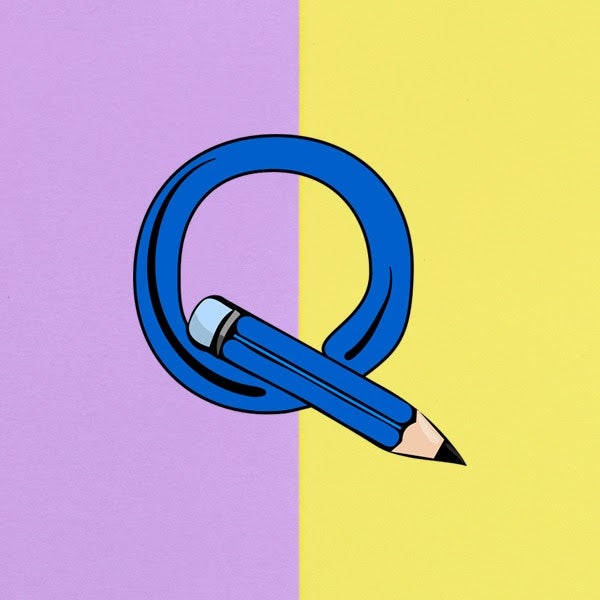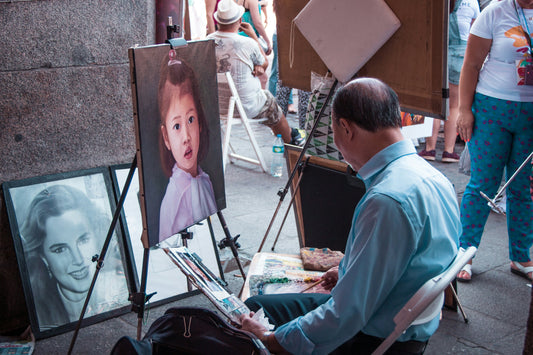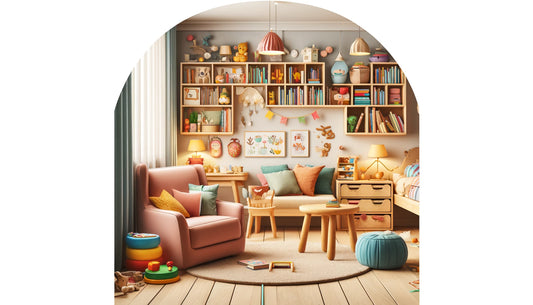Drawing pencils are like the unsung heroes of the art world. They may seem simple, even unassuming, but they are the foundation upon which countless masterpieces have been created. If you've ever held a pencil in your hand, you're already well on your way to becoming an artist, whether you're a budding Picasso or simply a parent looking to inspire your child's creative spirit.
In this article, we embark on a journey to demystify the world of drawing pencils, making it accessible and enjoyable for all, from the curious child with a sketchbook to the entire family seeking a shared artistic adventure.
So, what is a drawing pencil?

In this section, we'll peel back the layers of what makes a drawing pencil more than just a humble writing tool. Drawing pencils are, at their core, instruments of artistic expression. Let's start by understanding the fundamental elements that make up these remarkable tools and why they hold a special place in the world of art.
The Anatomy of a Drawing Pencil
A drawing pencil may seem deceptively simple: a slender wooden shaft encasing a piece of lead. However, each component plays a crucial role in shaping your creative journey:
- The Lead: This is where the magic happens. The "lead" of a drawing pencil is not actually made of lead but is usually composed of a mixture of graphite and clay. This core determines the pencil's hardness, darkness, and the lines it creates on paper. The interplay of these materials allows artists to achieve a wide range of effects, from the finest of lines to bold, expressive strokes.
- The Wooden Casing: The wooden casing surrounding the lead not only provides a comfortable grip but also protects the fragile core from breaking. The type and quality of wood can vary, affecting the pencil's durability and feel in your hand.
- The Ferrule and Eraser: Some drawing pencils come equipped with a metal ferrule at the end that holds an eraser. While these erasers are handy for quick fixes, they're not typically recommended for fine art applications. Still, they can be quite useful for sketching or when drawing with children.
Grading: The Language of Pencils
One of the most intriguing aspects of drawing pencils is the grading system. Pencils are graded on a scale from 9H (the hardest) to 9B (the softest), with "F" standing for "fine point." The H pencils produce lighter and finer lines, making them ideal for detailed work, while the B pencils create darker and softer lines, perfect for shading and bold strokes.
Why Drawing Pencils Matter
Drawing pencils are the tools that allow artists to translate their thoughts, emotions, and visions onto paper. Understanding the components and grading system empowers you to choose the right pencil for the effect you want to achieve. Whether you're aiming for intricate details in a portrait or bold, expressive lines in a landscape, your choice of pencil can make all the difference.
Types of Drawing Pencils
In the artistic realm, one size does not fit all. Just as different brushes are used for various painting techniques, there's a diverse array of drawing pencils, each designed to achieve specific effects and cater to different artistic styles. Let's explore the world of drawing pencils and their unique characteristics.
1. Graphite Pencils: The All-Purpose Workhorse
Graphite pencils are the quintessential drawing tools, renowned for their versatility. They come in various grades, from the hard and light 9H to the soft and dark 9B, allowing artists to create everything from precise, fine lines to rich, velvety shadows. These pencils are a staple for both beginners and seasoned artists due to their wide range of applications.
2. Charcoal Pencils: For Dramatic Depth
Charcoal pencils are the go-to choice when artists want to introduce drama and depth to their drawings. Charcoal leads are made from compressed charcoal, resulting in a darker and more expressive mark than traditional graphite. They excel in producing bold, smudgy lines, making them ideal for life drawings, expressive sketches, and portraits that require deep shadows.
3. Coloured Pencils: Adding a Splash of Color
Coloured pencils bring a vibrant and colourful dimension to drawing. Unlike traditional graphite or charcoal, coloured pencils feature a wax or oil-based core infused with pigment. These pencils come in a wide spectrum of colours, allowing artists to create detailed and colourful artwork. They're popular among illustrators, children, and anyone looking to add a burst of colour to their creations.
4. Watercolor Pencils: The Blend of Two Worlds
Watercolor pencils combine the precision of coloured pencils with the fluidity of watercolours. When activated with water, the pigments dissolve and spread, creating stunning watercolour effects. They are a fantastic choice for artists who enjoy both drawing and painting, as they offer the best of both worlds.
5. Mechanical Pencils: Precision and Consistency
Mechanical pencils are a favourite among technical artists and illustrators for their precision. They use a replaceable lead that never needs sharpening, allowing for consistent line thickness. These pencils are excellent for intricate detail work and precise drafting.
How to Choose the Right Drawing Pencil
With the diverse world of drawing pencils at your fingertips, selecting the right one can feel like choosing the perfect colour from a vast palette. But fear not, as this section is your compass to navigate the sea of options. Whether you're a parent guiding your child for an art class or a family seeking the ideal tool for creative bonding, understanding how to choose the right drawing pencil is essential.
1. Consider the Purpose:
Before picking up a pencil, think about the artwork you intend to create. Are you sketching, shading, doodling, or adding vibrant colours to your masterpiece? Each purpose will dictate the type of drawing pencil you should reach for:
- Sketching: For initial outlines and rough sketches, opt for a medium-grade graphite pencil (e.g., 2B or HB). They strike a balance between precision and shading capability.
- Shading and Tonal Work: If your art leans heavily on shading, go for softer pencils like 4B or 6B. They create deeper, more expressive shadows.
- Colorful Creations: When you're eager to add a burst of colour to your drawings, coloured pencils or watercolour pencils are the way to go.
2. Consider the Surface:
The type of paper you're working on also influences your choice of drawing pencil:
- Smooth Paper: Graphite pencils glide smoothly on smooth surfaces, creating crisp lines and detailed work.
- Textured Paper: Charcoal pencils work wonderfully on textured paper, allowing you to achieve rich, expressive marks.
3. Personal Preference:
Your artistic preferences and style matter. Some artists fall in love with the expressive quality of charcoal, while others appreciate the control and precision of graphite. Trust your instincts and explore different mediums to discover what resonates with you.
4. Experiment and Explore:
Don't be afraid to experiment with various drawing pencils. The beauty of art lies in exploration and self-discovery. Try different grades and types to find the one that suits your unique artistic voice.
5. Age and Skill Level:
If you're a parent introducing drawing to your child, consider their age and skill level. Younger children may find coloured pencils or graphite pencils easier to handle, while older kids and teenagers might be ready to explore the world of charcoal or watercolour pencils.
Caring for Your Drawing Pencils
Drawing pencils are not just stationery; they are companions on your artistic journey. To ensure they stay reliable and ready whenever inspiration strikes, it's essential to learn how to care for them properly. Whether you're a parent guiding your child or a family collectively exploring the world of art, knowing how to maintain your drawing pencils will extend their lifespan and keep your creative endeavours running smoothly.
1. The Art of Sharpening:
Properly sharpened pencils are a joy to use. Here's how to do it right:
- Hand Sharpening: Invest in a good quality handheld sharpener with a sharp blade. Gently twist the pencil while keeping it steady to create a fine point. Avoid over-sharpening, as it can lead to breakage.
- Electric Sharpeners: For convenience, consider an electric sharpener, especially if you use pencils frequently. Ensure the sharpener is suitable for the pencil size.
- Blade Sharpening: Some artists prefer to use a craft knife or blade to hand-sharpen their pencils for more control over the point's shape.
2. Preventing Breakage:
Drawing pencils, especially softer grades, are more prone to breakage. To minimise this:
- Avoid Applying Excessive Pressure: Let the pencil's weight and the quality of the paper do the work for you. Heavy-handed pressure increases the risk of breakage.
- Rotate the Pencil: As you draw or shade, rotate the pencil periodically. This helps maintain an even point and reduces the risk of wearing down one side.
3. Storage Matters:
How you store your drawing pencils can significantly impact their lifespan:
- Pencil Cases: Invest in a pencil case or pouch to keep your pencils organised and protected from dust and damage. There are cases specifically designed for different pencil types.
- Vertical Storage: Storing pencils vertically in a container can help prevent the lead from becoming misshapen or breaking.
4. Erasers and Clean-Up:
While erasers are handy tools, some erasers can leave residue on your artwork. Here's what to keep in mind:
- Use a Kneaded Eraser: Kneaded erasers are gentle on the paper and can be shaped to target specific areas. They're particularly useful for charcoal and graphite work.
- Clean Up Gently: If you need to remove eraser crumbs or debris from your drawing, use a soft brush or a clean, dry cloth. Avoid rubbing too hard, as it may smudge the drawing.
Drawing Ideas for Inspiration
Whether you're a parent nurturing your child's budding talent or a family eager to bond through creativity, drawing ideas can ignite your imagination. Here are a few prompts to spark your creativity:
- Cartoon Characters: Bring beloved characters to life, from classic Disney figures to modern superheroes. Unleash your inner animator and let your pencil dance on paper.
- Animals: The animal kingdom is a vast source of inspiration. Sketch your favourite pets, wild animals, or even mythical creatures.
- Food and Drink: Capture the essence of your favourite dishes or create whimsical food-themed art. Who can resist drawing a mouthwatering pizza or a refreshing glass of lemonade?
- Emojis: Emojis are the modern-day hieroglyphs of our digital conversations. Interpret these tiny symbols in your unique artistic style.
- Places: Take a virtual trip around the world by drawing iconic landmarks and breathtaking landscapes. Travel through art!
- Objects: Ordinary objects can become extraordinary subjects for your drawings. Experiment with still life and discover the beauty in everyday things.
Unlock Your Creative Potential with Step-by-Step Tutorials
If you're eager to dive deeper into these drawing themes, we invite you to explore our comprehensive drawing tutorial pages. There, you'll find step-by-step guidance accompanied by engaging video content. Whether you're a beginner seeking to build your skills or an experienced artist looking for fresh inspiration, these tutorials offer valuable insights and techniques.




